Turkish Airlines Fleet Airbus A321-200 Details and Pictures. On current fleet, Turkish Airlines operated 68 narrow-body aircraft Airbus A321-200.
Airplane Airbus A321 represents elongated by 7 meters modification of A320 airplane.
Airbus A321 provides the lowest cost of flight for 1 kilometer distance per one passenger among narrow-bodied airplanes.
In other words thanks to low fuel consumption rate and big passenger capacity the flight on 1 kilometer of Airbus A321 is cheaper for one passenger than on other narrow-bodied airplanes.
Airbus A321 is equipped with new winglets that on Airbus are named Sharklets.
This winglets improve aerodynamic characteristics of the wing, reducing fuel consumption and increasing flying range.

Airbus A321-200 Turkish Airlines Aircraft Fleet Data and Registration Number
| Aircraft Type | Reg | Age |
| Airbus A321-200 | TC-JMN | 12.2 years |
| Airbus A321-200 | TC-JRL | 10.6 years |
| Airbus A321-200 | TC-JRN | 7.8 years |
| Airbus A321-200 | TC-JRE | 11.7 years |
| Airbus A321-200 | TC-JMJ | 10.1 years |
| Airbus A321-200 | TC-JRM | 7.8 years |
| Airbus A321-200 | TC-JMM | 12.2 years |
| Airbus A321-200 | TC-JMH | 10.1 years |
| Airbus A321-200 | TC-JRC | 12.0 years |
| Airbus A321-200 | TC-JML | 11.0 years |
| Airbus A321-200 | TC-JRA | 12.5 years |
| Airbus A321-200 | TC-JRO | 7.7 years |
| Airbus A321-200 | TC-JRH | 11.0 years |
| Airbus A321-200 | TC-JMI | 10.1 years |
| Airbus A321-200 | TC-JRR | 7.7 years |
| Airbus A321-200 | TC-JRD | 12.0 years |
| Airbus A321-200 | TC-JRJ | 10.9 years |
| Airbus A321-200 | TC-JRK | 10.6 years |
| Airbus A321-200 | TC-JRF | 11.5 years |
| Airbus A321-200 | TC-JRS | 7.5 years |
| Airbus A321-200 | TC-JRI | 10.9 years |
| Airbus A321-200 | TC-JRB | 12.4 years |
| Airbus A321-200 | TC-JRG | 11.2 years |
| Airbus A321-200 | TC-JMK | 10.1 years |
| Airbus A321-200 | TC-JRP | 7.7 years |
| Airbus A321-200 | TC-JTO | 2.3 years |
| Airbus A321-200 | TC-JSV | 3.4 years |
| Airbus A321-200 | TC-JSY | 3.4 years |
| Airbus A321-200 | TC-JRU | 7.5 years |
| Airbus A321-200 | TC-JSK | 5.6 years |
| Airbus A321-200 | TC-JSE | 6.0 years |
| Airbus A321-200 | TC-JTA | 3.3 years |
| Airbus A321-200 | TC-JSR | 3.6 years |
| Airbus A321-200 | TC-JTI | 2.7 years |
| Airbus A321-200 | TC-JTD | 3.2 years |
| Airbus A321-200 | TC-JSB | 6.6 years |
| Airbus A321-200 | TC-JSU | 3.5 years |
| Airbus A321-200 | TC-JSM | 5.5 years |
| Airbus A321-200 | TC-JST | 3.5 years |
| Airbus A321-200 | TC-JSZ | 3.3 years |
| Airbus A321-200 | TC-JSG | 5.9 years |
| Airbus A321-200 | TC-JRV | 6.8 years |
| Airbus A321-200 | TC-JSH | 5.7 years |
| Airbus A321-200 | TC-JTJ | 2.6 years |
| Airbus A321-200 | TC-JSF | 5.9 years |
| Airbus A321-200 | TC-JTH | 2.9 years |
| Airbus A321-200 | TC-JRZ | 6.7 years |
| Airbus A321-200 | TC-JSL | 5.6 years |
| Airbus A321-200 | TC-JTP | 2.0 years |
| Airbus A321-200 | TC-JSC | 6.4 years |
| Airbus A321-200 | TC-JTE | 3.1 years |
| Airbus A321-200 | TC-JSN | 3.8 years |
| Airbus A321-200 | TC-JTL | 2.6 years |
| Airbus A321-200 | TC-JTG | 2.9 years |
| Airbus A321-200 | TC-JTN | 2.4 years |
| Airbus A321-200 | TC-JSO | 3.7 years |
| Airbus A321-200 | TC-JTR | 1.9 years |
| Airbus A321-200 | TC-JSI | 5.7 years |
| Airbus A321-200 | TC-JSP | 3.7 years |
| Airbus A321-200 | TC-JTF | 2.9 years |
| Airbus A321-200 | TC-JTM | 2.5 years |
| Airbus A321-200 | TC-JSJ | 5.5 years |
| Airbus A321-200 | TC-JSS | 3.5 years |
| Airbus A321-200 | TC-JRY | 6.8 years |
| Airbus A321-200 | TC-JTK | 2.6 years |
| Airbus A321-200 | TC-JSD | 6.1 years |
| Airbus A321-200 | TC-JRT | 7.5 years |
| Airbus A321-200 | TC-JSA | 6.7 years |
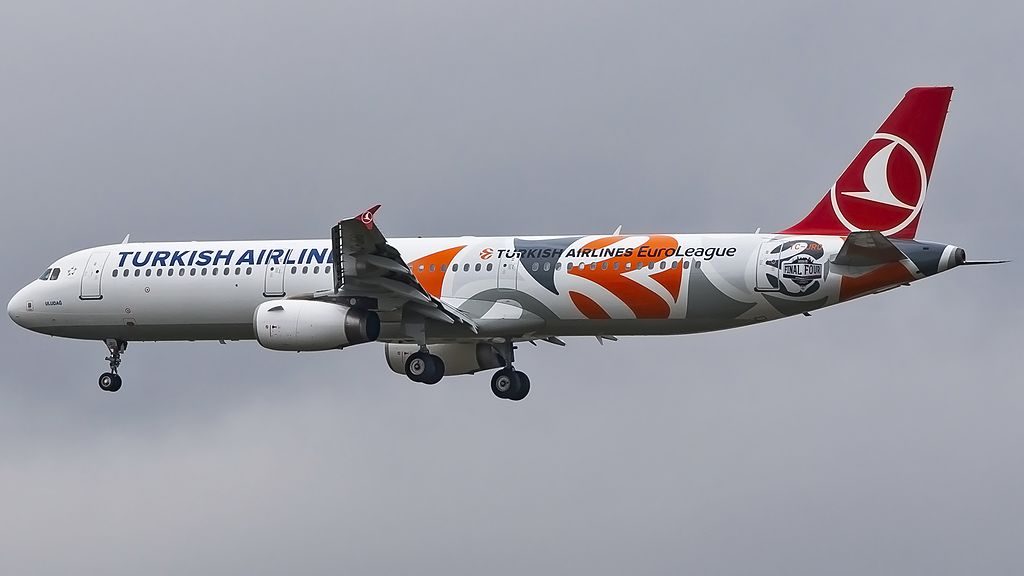
Turkish Airlines Fleet Airbus A321-200 Cabin Interior Class Configuration and Seats Layout
Turkish Airlines operates two versions of Airbus A321-200.
Both versions offer seats of two classes.
Turkish equips its Airbus A321s with a convertible Euro-style cabin, where all the seats are economy, but the first rows can be converted to business class seating by blocking the middle seat and moving a dividing curtain between the sections.
Turkish Airlines A321 is configured with the new business class cabin with 5 rows of seats in a 2 x 2 layout.
It’s actually a pretty spacious and beautiful cabin with 20 brand new recliner seats in plush, black leather.
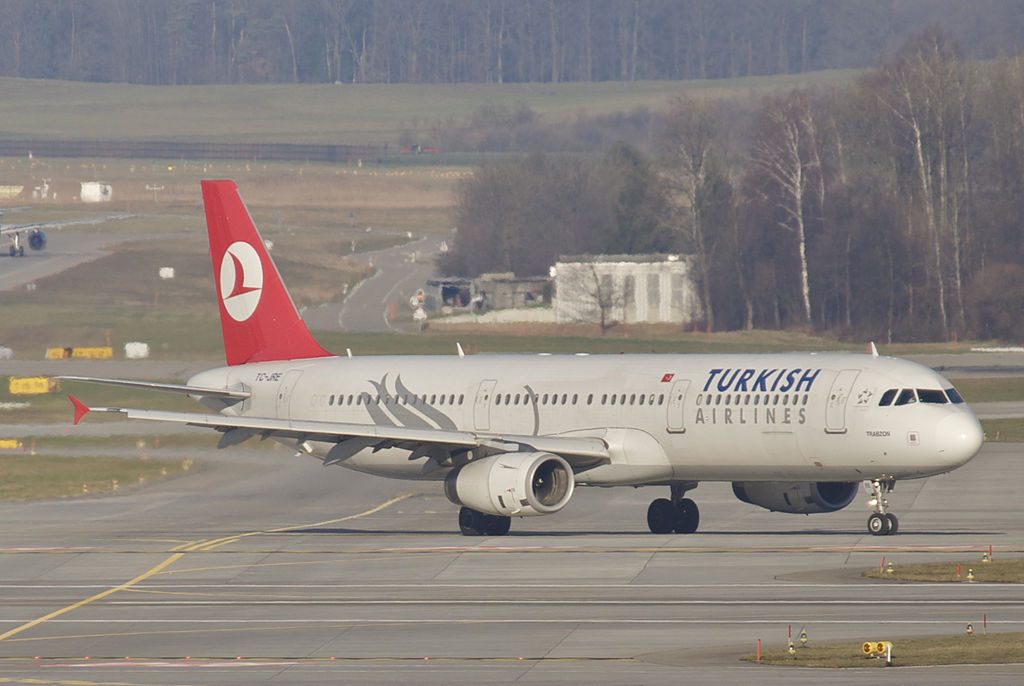
Similar to “domestic first class seats,” these Turkish Airlines A321 business class seats offer 20 inches of width and 34 inches of pitch.
The seats recline approximately 6 inches and have adjustable head rests and leg rests.
The head rest was comfortable but I must admit the leg rest was rather useless as it only “raised” up approximately 3 inches.
When fully extended, the leg rest just shifted my legs forward and did nothing to comfort or support them.
Manual seat controls are located on the armrests.
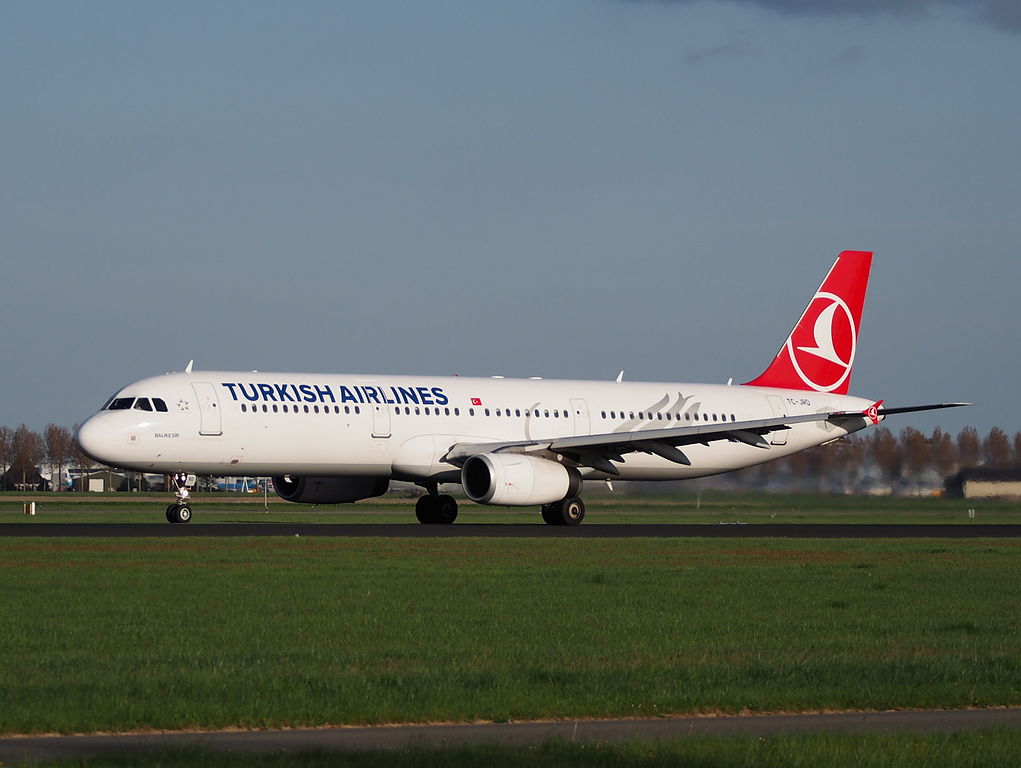
Each seat is equipped with an in-flight entertainment (IFE) system, USB port, universal electrical outlet, two personal reading lamps, overhead air vent and a coat hook.
The touchscreen IFE monitors are bright and clear and the entertainment system offers a decent selection of movies, TV shows, video games and audio entertainment.
The IFE monitors are located in the center console and the companion remotes are located in the armrests.
Audio entertainment and flight details can be controlled from the remote without having to remove your IFE monitor from the center console.
Seat Map and Seating Chart Turkish Airlines Airbus A321-200 V1

This version of Airbus A321-200 is the most common in Turkish Airlines.
This airplane may accommodate 188 passengers in two classes: business and economy.
Business class offers 12 seats per 4 in each row.
The seats of the 1st row have the following disadvantages: limited space for passengers’ legs, reduced width and lack of floor storage during take-off and landing.
Economy class consists of 176 standard seats.
Most of the seats of the economy class have 3-3 configuration.
Because of the position of the bulkhead the legroom of the seats of the 4th row is limited.
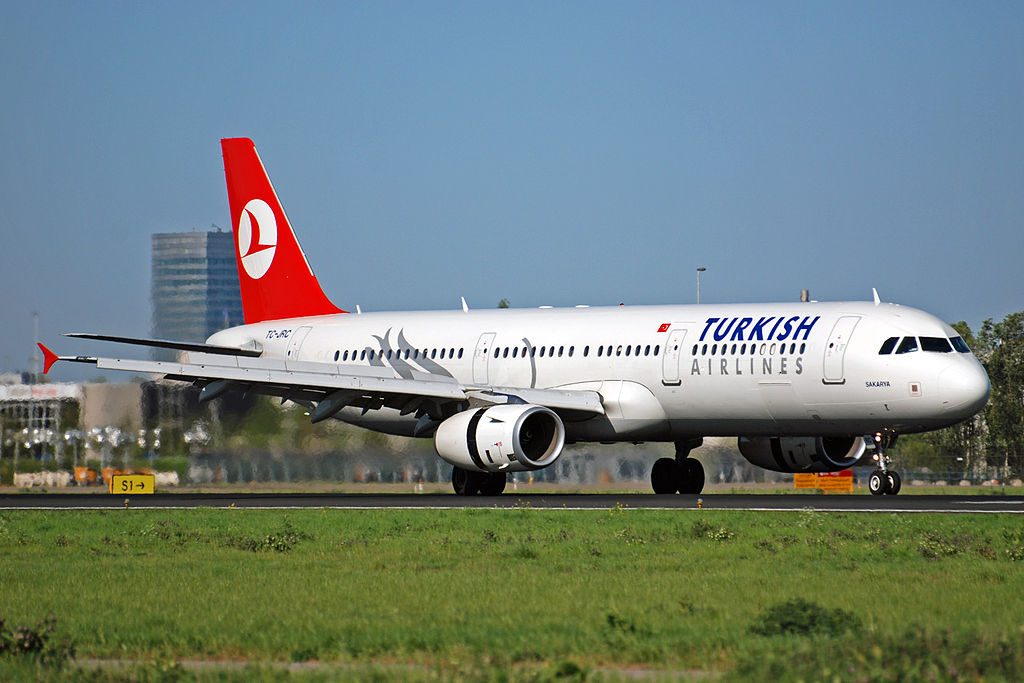
In addition, these seats have no floor storage during take-off and landing.
For passengers with infants these seats offer bassinet locations.
The main disadvantage of the seats of the 8th row is limited recline due to the exit row behind.
Behind the exit row 14 rows of seats are located.
Passengers of the seats of the 9th row will feel comfortable thanks to the extra legroom.
As the tray tables are built-in the armrests the width of these seats is reduced a little.
Lack of floor storage during take-off and landing is another disadvantage of these seats.
As there are no seats in front the seats 10A and 10F offer extra space for passengers legs.
But these seats have no floor storage during take-off and landing.
For passengers who a travelling with a partner will be ideal the seats 23BC and 23DE.
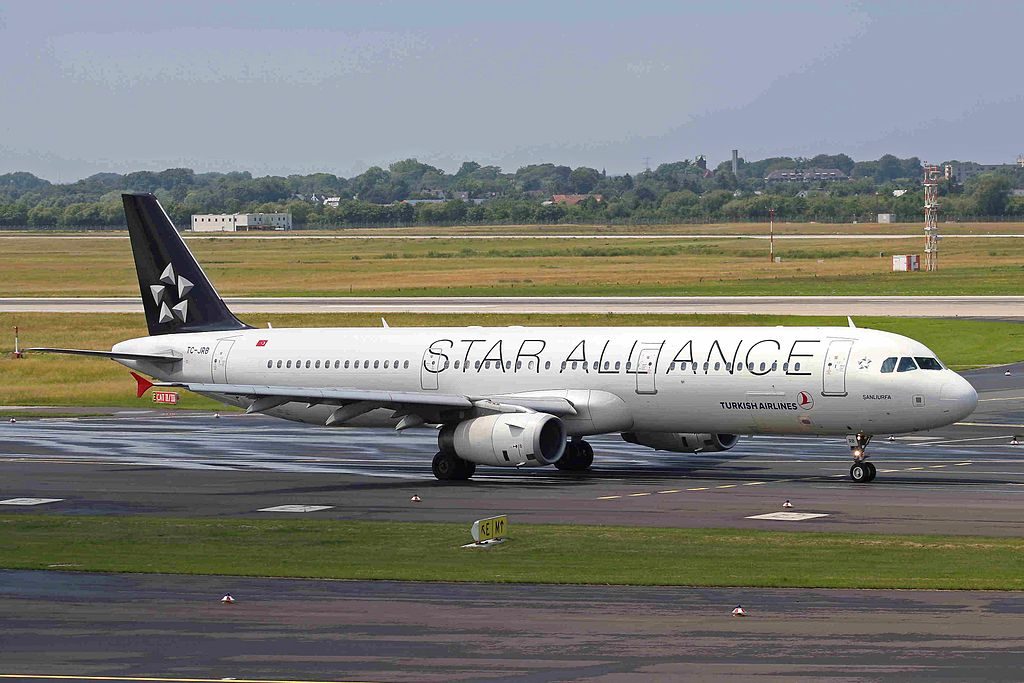
However, these seats are less reclining than standard die to the exit row located behind.
The last section of economy class seats consists of 11 rows of seats.
The seats of the 24th row are considered good seats as they have extra space for passengers’ legs.
Among disadvantages: lack of floor storage during take-off and landing and reduced width.
Location of the galley and lavatory behind and limited recline make the seats of the last 34th row bad seats.
Seat Map and Seating Chart Turkish Airlines Airbus A321-200 V2

This version of Airbus A321-200 may accommodate 20 passengers in business class and 158 passengers in the economy class.
The seats of the business class are located in 5 rows and have 2-2 configuration.
Passengers of the seats of the 1st row will feel comfortable thanks to extra legroom.
At the same time the noise from the galley and lavatory in front as well as reduced width and lack of floor storage during take-off and landing may be bothersome.
The seats of business and economy class are divided from each other with a bulkhead position of which restricts legroom of the seats of the 6th row.
Also these seats have no floor storage during take-off and landing.
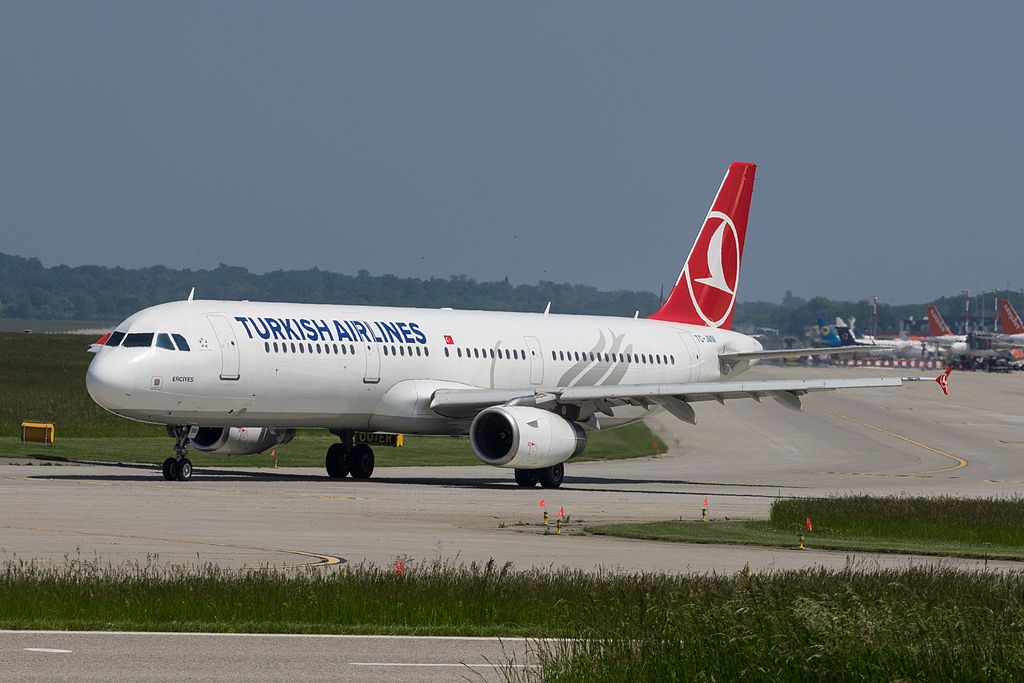
As the seats of the 7th row are located between two exit rows, passengers of these seats on the one hand will take advantage of extra legroom but on the other these seats are less reclining than standard and have no floor storage during take-off and landing.
The seats of the 8th row are considered good seats as they offer additional space for passengers’ legs.
However, these seats have no floor storage during take-off and landing.
Because of the exit row located behind the seats of the 19th row are less reclining.
Also these seats have no floor storage during take-off and landing.
Location of the seats of the 20th row between two exit rows provides these seats with extra legroom but also with limited recline.

Lack of floor storage during take-off and landing is another disadvantage of these seats.
Passengers of the seats of the 21st row will take advantage of extra legroom.
These seats are considered good seats. Insignificant disadvantage of these seats is lack of floor storage during take-off and landing.
Other passengers tend to gather in the area of the seats 31C, 31D and 32ABC, 32DEF causing discomfort to passengers of these seats.
Also the seats of the last 32nd row may have limited recline that is why these seats are considered bad seats.

Airbus A321-200 Turkish Airlines Aircraft Fleet Inflight Amenities and On-Board Services Information
- Audio. Turkish Airlines offers a wide variety of radio stations and audio CDs.
More Information - Video. On select routes, each seat is equipped with a personal TV with Audio and Video onDemand that features 30 movies, 40 short films, and games. More Information
- Food. Turkish Airlines serves complimentary meals, alcoholic beverages, and soft drinks.
More Information
Turkish Airlines Aircraft Fleet Narrow-Body Airbus A321-200 Images Gallery



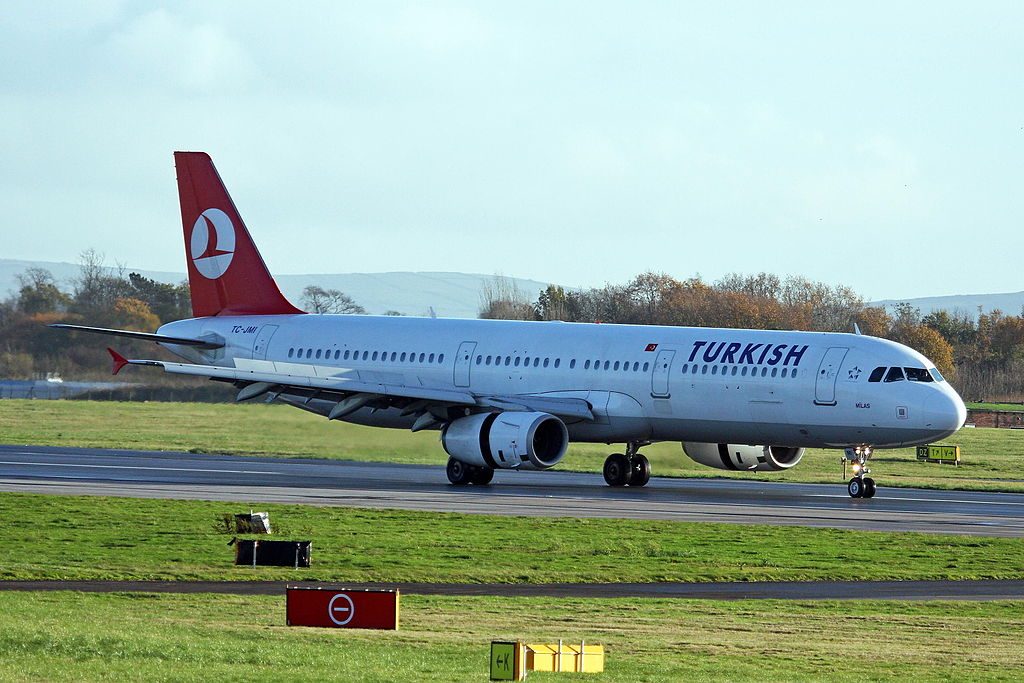
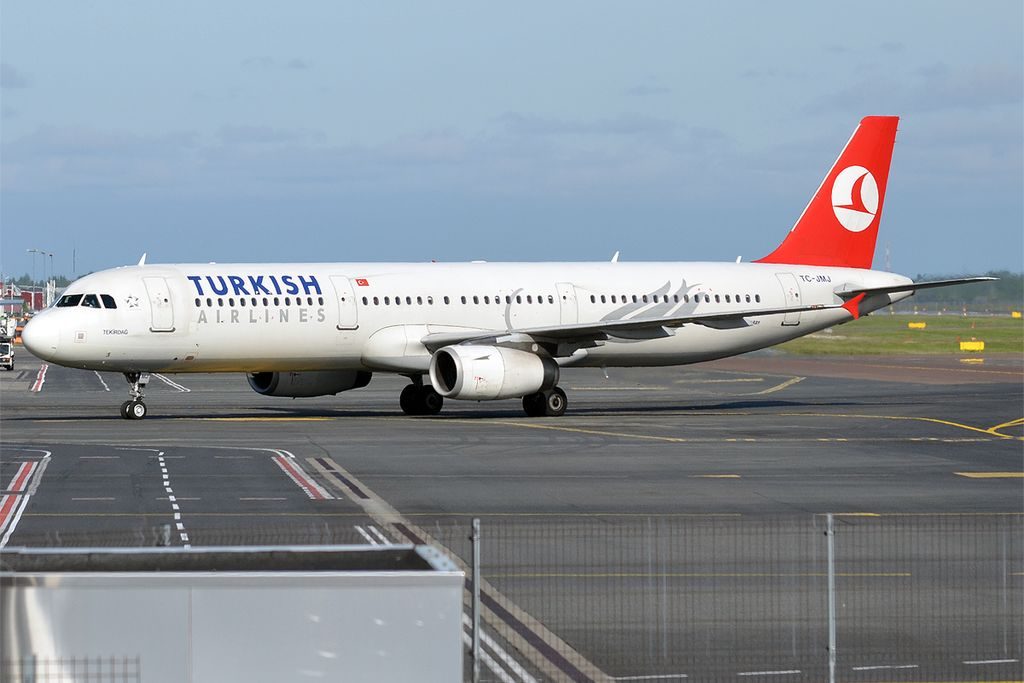









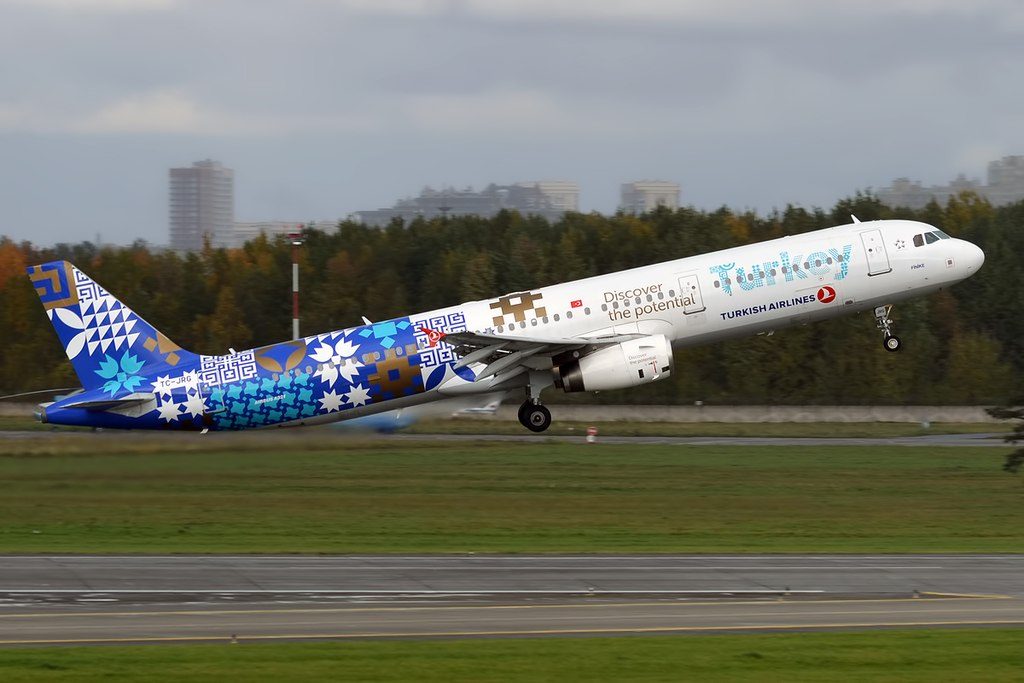


Thanks to visiting AirlinesFleet.com and read article : Turkish Airlines Fleet Airbus A321-200 Details and Pictures.
1 thought on “Turkish Airlines Fleet Airbus A321-200 Details and Pictures”
Comments are closed.